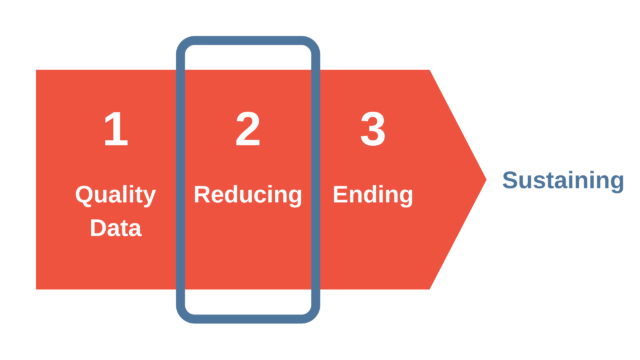Youth, young adults, and alumni with lived experience have the wisdom and expertise we need to develop effective solutions to youth and young adult homelessness. Jada is a member of the Yakima Anchor Community Initiative Core Team, and this is her story of how the current public health crisis has affected life and access to services in her community.
Being a single mom can be hard. Going to school online while parenting is a challenge. So is staying on top your health. What happens when a routine changes? Things get disorganized and for a while it seems like life is upside down. In 2016 I experienced homelessness for many different reasons. At that time, I lived in Seattle, WA and had to really dig for resources that were able to support me in my situation. In the following years the cycle repeated itself. I was never “stable or supported” to begin with from the way some organizations had promised. Reentering homelessness, I decided to move back home to Yakima and figure it out from there. As soon as I asked a few questions from the Washington State Department of Social and Health Services (DSHS) and other people in the area, I knew there was enough support to help me stabilize myself the way I was hoping for from the start.
 COVID-19 has taken its turn on my life. My name is Jada Topps, I currently live in Yakima, WA. I am 20 years old and a parent to a beautiful baby boy that is 7 months old. I am a type one diabetic since the age of four and due to the COVID-19 virus I am currently attending four classes online at Yakima Valley College.
COVID-19 has taken its turn on my life. My name is Jada Topps, I currently live in Yakima, WA. I am 20 years old and a parent to a beautiful baby boy that is 7 months old. I am a type one diabetic since the age of four and due to the COVID-19 virus I am currently attending four classes online at Yakima Valley College.
Before COVID, I was attending weekly meetings with my case managers from Catholic Charities, Rod’s House, Life Choices, and my advisor for school. As the result of an accident, I was going to the chiropractor and taking my son to his follow up appointments as well. Our routine was perfect. Sometimes things were complicated, but life was smooth, and I felt supported.
As of today, because of the pandemic I am no longer able to attend my weekly meetings with some of my case managers. Rod’s House is closed, so I cannot get the same type of help that was provided before. That includes helping me with my power bill, phone bill, rent, laundry access, toiletries so I can save more money for the other essentials I need such as food.
Catholic Charities is not able to assist me right now with the goals that I have been working on. This is important because I feel like with my goals, it is easier for me to visualize if I am being held accountable. Showing up sometimes is the best way to ensure I stick to my own commitments, but they are doing weekly scheduled phone calls to ensure we aren’t losing our motivation to stay housed. Life Choices is still distributing care via curbside pickup if you call ahead for free diapers, baby cereals, and wipes.
All the routine disruption makes it hard to not reenter the state of mind that “nothing is going how it should or how fast I would like it to, so I might as well give up.” But I feel the love and support that is shared between these organizations, and because of their drive and motivation to push me forward and see me be successful I will keep fighting to win, in EVERYTHING I do.


 r to the Anchor Community Initiative? At a high-level, it means lowering the number of young people experiencing homelessness across the entire system. To start this process, our Data and Evaluation Director, Liz, has created different focus areas, or reducing process measures. Communities set goals around any of the following focus areas to start seeing reductions in their homeless numbers:
r to the Anchor Community Initiative? At a high-level, it means lowering the number of young people experiencing homelessness across the entire system. To start this process, our Data and Evaluation Director, Liz, has created different focus areas, or reducing process measures. Communities set goals around any of the following focus areas to start seeing reductions in their homeless numbers: